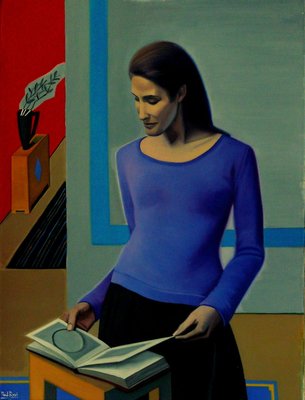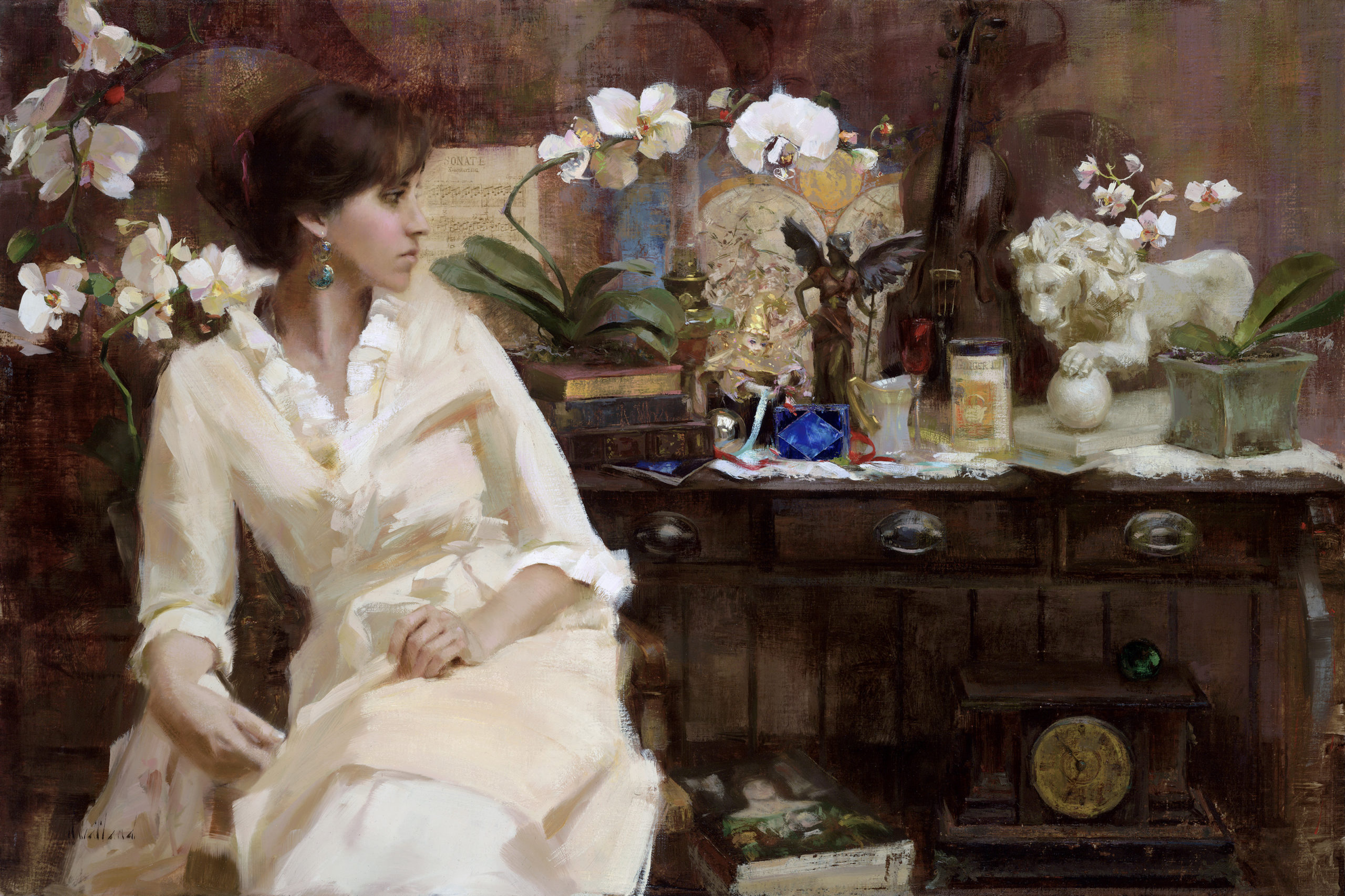The Function of Emotion and Expression in Figurative Oil Painting: A Thorough Analysis of Topic and Structure
The interplay of emotion and expression in figurative oil paint acts as an important lens whereby one can take a look at the elaborate relationship in between subject issue and composition. Artists harness various strategies, from color selection to brushstroke characteristics, to cultivate psychological vibration within their works. This nuanced orchestration not just shapes viewer assumption however also welcomes a deeper query into just how these aspects coalesce to show the intricacies of human experience. As we explore this abundant surface, one must think about just how specific instance studies brighten the wider implications of these imaginative choices.
Understanding Feeling in Art
Feeling in art acts as an effective avenue for expression, allowing artists to share complex feelings with their job. In figurative oil painting, this emotional deepness is usually depicted with the representation of the human number, capturing the subtleties of human experience. The choice of topic, shade palette, and brushwork all add to the emotional vibration of an item.
Artists regularly draw upon personal experiences, societal problems, or universal styles to stimulate sensations in the visitor. For instance, a portrait may show vulnerability, while a vibrant number in movement can signify liberty or chaos. These emotional threads link the customer to the art work, promoting a discussion that goes beyond the visual medium.
Additionally, the interplay between light and shadow can enhance psychological strength, leading the viewer's gaze and accentuating certain components within the make-up. The usage of appearance in oil paint additionally adds layers of complexity, inviting a responsive feedback that boosts the emotional experience. Generally, comprehending emotion in art is essential for appreciating the nuances that define figurative oil painting, as it changes plain representation into an extensive expedition of the human condition.
Crucial Element of Make-up
In the realm of figurative oil paint, the structure serves as the underlying structure that arranges visual components and improves the psychological story. Vital components of make-up consist of equilibrium, contrast, centerpiece, and rhythm, each adding to the total influence of the art work.
Balance refers to the distribution of aesthetic weight within the painting, which can be attained with in proportion or unbalanced setups. A well-balanced make-up supplies stability, permitting the audience to involve with the piece sympathetically - figurative oil painting. Contrast, on the various other hand, involves comparing different components, such as light and dark or cozy and awesome shades, to direct the visitor's eye and evoke psychological reactions
The focal factor is important, as it directs interest to one of the most significant component of the paint, typically highlighting the psychological core of the narrative. With methods like shade saturation or placement, musicians can emphasize this area effectively. Rhythm pertains to the repeating of components, creating a sense of motion and circulation throughout the make-up. By skillfully integrating these essential aspects, artists can craft emotionally powerful and compelling figurative oil paints that astound and engage their audience.
Topic and Its Impact
Subject plays a critical function in figurative oil painting, as it not only serves as the foundation for the narrative but also forms the viewer's analysis and psychological involvement with the art work. The selection of subject issue-- be it a singular figure, a group dynamic, or a thematic representation-- directly affects the psychological environment communicated to the audience.

For example, pictures frequently stimulate personal links, exposing the intricacies of human expression and personality, while scenes depicting public activities can develop a sense of belonging or fond memories. The cultural and historic context of the subject issue enriches the customer's understanding, prompting deeper representations on societal standards, worths, and the human condition.
Different topics also produce differing levels of interaction; a significant conflict illustrated via figures in stress might elicit feelings of anxiousness or compassion, while peaceful landscapes can conjure up peace and contemplation. Eventually, the influence of subject in figurative oil painting is profound, as it acts as an avenue for emotional vibration, leading the viewer's action and analysis, and cultivating a link between the artwork and the onlooker. This interaction is crucial for the successful communication of the artist's intent.
Methods for Stimulating Sensations
The efficiency of metaphorical oil paint in sharing feelings is dramatically affected by the techniques employed by the musician. One of one of the most vital methods is the use of color theory, where the tactical selection of colors can evoke details psychological feedbacks. Cozy shades, such as oranges and reds, often elicit feelings of interest or aggressiveness, while cooler tones like blues and environment-friendlies often tend to stimulate calmness or unhappiness.
An additional necessary method is the control of light and shadow, understood as chiaroscuro. This method enhances the three-dimensionality of numbers, developing remarkable contrasts that can heighten emotional depth. The positioning of light can lead customers' emotions, highlighting specific components of the make-up.
Brushwork likewise plays an important role; loose, meaningful strokes can communicate energy and spontaneity, whereas smoother techniques could suggest tranquility or accuracy. The browse around these guys arrangement of topics within the composition can affect emotional influence. Close distance can suggest affection, while distance might indicate seclusion.
Ultimately, the mix of these methods enables musicians to craft narratives that resonate with the visitor, transforming a mere visual experience right into an evocative emotional journey. - figurative oil painting

Study of Remarkable Functions
Analyzing significant jobs of metaphorical oil paint discloses exactly how various methods are utilized to evoke effective emotions. One exemplary instance is Edvard Munch's "The Scream," where the altered figure and swirling background communicate existential fear. Munch's use color-- deep blues and dazzling oranges-- magnifies the psychological influence, showcasing how palette options can form visitor experience.
One more considerable work is Pablo Picasso's "Les Demoiselles d'Avignon." Right here, strong brushstrokes and fragmented forms show a troubled emotional landscape, challenging conventional representations of the female number. Picasso's cutting-edge make-up not just catches the audience's attention but also welcomes reflection on styles of identity and sexuality.
Additionally, Frida Kahlo's "Both Fridas" offers an emotional expedition of duality and self-identity. The contrasting figures, connected by a common heart, exemplify Kahlo's emotional deepness and individual narrative. figurative oil painting. Her Get More Info meticulous focus to information and symbolic aspects serve to involve customers on a visceral degree
These study highlight the profound link between emotion and make-up in metaphorical oil painting, revealing how artists harness technique to connect complicated sensations and stories that resonate across time and culture.

Verdict
To conclude, the interaction of emotion and expression in metaphorical oil painting substantially enhances the customer's experience and analysis of the artwork. With a mindful selection of topic and compositional techniques, artists share profound narratives that reverberate on both individual and universal levels. The application of color brushwork, chiaroscuro, and theory more enhances emotional deepness, changing each canvas into a powerful reflection of the intricacies of the human experience.
In metaphorical oil paint, this emotional depth is commonly represented through the depiction of the human figure, catching the subtleties of human experience.Moreover, the interplay between light and shadow can magnify psychological strength, guiding the audience's gaze and drawing interest to certain components within the composition. The use of texture in oil painting even more adds layers of complexity, inviting a tactile action that improves the psychological experience.The focal factor is important, as it routes focus to the most substantial component of the paint, commonly highlighting the emotional core of the browse around this site narrative. Ultimately, the effect of subject issue in figurative oil painting is profound, as it offers as an avenue for psychological vibration, leading the visitor's feedback and analysis, and promoting a connection between the observer and the art work.